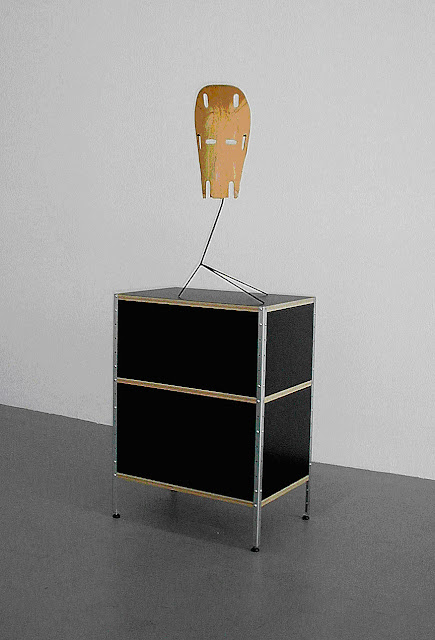"Where do you begin with an archive that comprises over a million artefacts? This was the question I asked myself repeatedly when I started research on the work of Charles and Ray Eames and the Eames Office for a new exhibition at the Barbican Art Gallery. The papers of Charles and Ray Eames were transferred to the Library of Congress in 1988, with further bequests made in the past decade. The material includes some 300,000 slides; 30,000 contact sheets and prints and their corresponding 220,000 film negatives; sketches, drawings, plans and printed material related to the couple's many and various projects; film and sound recordings; administrative documents, office records, press articles, personal and professional correspondence as well as all manner of intriguing items, from decorative gift wrapping and notes scribbled on the back of Benson & Hedges cigarette papers to a handmade bee stored in a heart-shaped box. The Eames family archive also contains an extraordinary array of personal and professional documents, artworks and objects. In the early stages of planning for the exhibition Eames Demetrios, the Eameses' youngest grandson, asked me if I was aware of what I was getting into, if I was prepared to “dive into the ocean”. The Design History Society travel grant has allowed me to do just that.
"The travel grant has been invaluable, enabling me to undertake a initial scoping visit to the Library of Congress in Washington D.C. in order to understand collection content as well as to discuss the pragmatic issues involved in preparing material for loan. I viewed a representative range of materials from all aspects of the collection, which is divided across four library divisions: prints and photographs, manuscripts, motion pictures and broadcasting, and music. This survey and analysis was guided by the insight of the Library staff responsible for acquiring and archiving the collection. In addition to providing a comprehensive overview of the collection's organisation, they selected and presented material likely to be of interest for exhibition, particularly from the part of the collection more recently presented to the Library by the Eames family. This newer material adds extensively to the records of the early years of the Office and also includes many files related to the personal friendships and professional relationships Charles and Ray Eames maintained with many leading creative figures of the period. Professor Pat Kirkham is an advisor to the exhibition and much of her current research is focused on analysing aspects of this new material.
"This early-stage scoping visit introduced me to the extent, diversity and arrangement of the collection. Until this point, the contents of the Library of Congress Eames Archive - which is often discussed in terms of its scale - seemed to me gargantuan to the point of abstraction. Now informed by my first-hand understanding of the collection I was able to work much more effectively at a distance and in close consultation with Library archivists when analysing the Library's cataloguing resources. The collection cannot be absorbed entirely in the time I have to research and prepare the exhibition, so subsequent research visits demanded focus and careful planning. The Design History Society travel grant was awarded at a crucial stage in the development of the exhibition and has undoubtedly transformed the productiveness of my recent research visits to the Library of Congress. Exhibition preparation continues apace and The World of Charles and Ray Eames opens at the Barbican Art Gallery next week.
The exhibition will be accompanied by a new publication and extensive programme of events.
Via: Design History Society

























